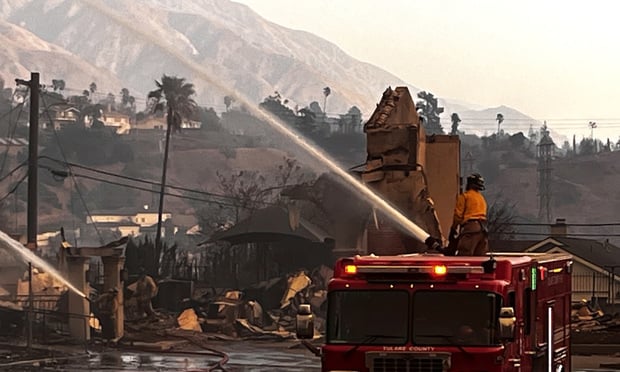As Hurricane Isaac heads toward the Gulf Coast, PC360 revisits some of the recent “I” storms whose names have been retired by the World Meteorological Organization due to insured and economic losses caused by the tropical cyclones.
This list covers storms from 2001 until Hurricane Irene, which struck in 2011. The National Hurricane Center (NHC) also lists Ione (1955) and Inez (1966) as retired “I” names.
Hurricane Iris — 2001

(Credit: NOAA)
Hurricane Iris was a Category 4 storm that crushed Belize in October 2001. According to the NHC, the storm caused around 31 deaths, although the NHC says the exact number is not known. The Belize government reported $66.2 million in damages to the country.
In the below photo, a couple recovers belongings from the wreckage of their house in Big Creek, Belize.

(Credit: AP Photo/Esteban Felix)
Hurricane Isidore — 2002

(Credit: NOAA)
Huricane Isidore was a September Category 3 storm at its strongest, causing damage in Jamaica, Cuba and the Yucatan Peninsula. It struck the U.S. Gulf Coast in Louisiana as a tropical storm, and the NHC, citing ISO PCS figures, says Isidore caused about $165 million in insured losses in the U.S.
In the below photo, a man stands near a destroyed tobacco house in Cuba. The storm hit western Cuba with 100 mile-per-hour winds.

(Credit: AP Photo/Jose Goitia)
Hurricane Isabel — 2003

(Credit: NOAA)
Isabel, the costliest tropical cyclone of the 2003 Atlantic Hurricane Season, strengthened to a Category 5 storm over water before weakening and making landfall near Drum Inlet, North Carolina as a Category 2 hurricane. According to the NHC, Isabel caused “widespread wind and storm surge damage in coastal eastern North Carolina and southeastern Virginia. Storm surge damage also occurred along Chesapeake Bay and the associated river estuaries, while wind damage occurred over portions of the remaining area from southern Virginia northward to New York.”
The NHC says the storm caused 16 deaths, with 10 in Virginia. Current insured property damage estimates are between $925 million and $1.7 billion in Virginia, $410 million in Maryland, $170 million in North Carolina, $80 million in Pennsylvania, $45 million in New York, $25 million in New Jersey, $20 million in Delaware, and $10 million in West Virginia.
The photo below shows an image from television taken from the international space station as it orbited over Isabel on Sept. 15, 2003.

(Credit: AP Photo/NASA TV)
Hurricane Ivan — 2004

(Credit: NOAA)
Hurricane Ivan was the storm that would not end, causing damage up to and after its first U.S. landfall just west of Gulf Shores, Alabama, and then re-forming into a tropical cyclone to make another pass through the Gulf after becoming an extra-tropical cyclone off of the U.S. East Coast. Luckily, the storm's second pass was nowhere near as destructive as the first. Throughout its long life, Ivan reached Category 5 status three separate times and made two separate U.S. landfalls at tropical-cyclone strength.
Ivan was a Category 3 storm when it made its first U.S. landfall. It moved northeast across Alabama, becoming a tropical depression before cutting further east across the Southeast U.S. and becoming an extratropical low over the DelMarVa peninsula. According to the NHC, Ivan then completed “a large anticyclonic loop,” heading south toward Florida and re-gaining tropical cyclone status in the Gulf of Mexico. The storm made its second U.S. landfall as a tropical depression in extreme southwestern Louisiana, and then quickly dissipated. Including its extratropical phase, Ivan existed for 22.5 days and produced a track more than 5600 nautical miles long.
In the U.S., the storm caused over 686,000 claims for an estimated $7.1 billion in insured losses, according to the NHC, citing numbers from the American Insurance Services Group. The Caribbean Development Bank further estimates more than $3 billion in damages in the Caribbean Sea region.
The below photo shows an enhanced infrared satellite view of Hurricane Ivan as it approached the Alabama coastline.

(Credit: AP Photo/National Hurricane Center)
Hurricane Ike — 2008

(Credit: NOAA)
Ike was the costliest hurricane to strike Texas, and third-costliest U.S. hurricane after Katrina and Andrew. It is responsible for 103 deaths across Hispaniola, Cuba, and parts of the United States Gulf Coast, according to the NHC. At its strongest, Ike was a Category 4 hurricane, and struck Cuba at that strength, causing the storm to weaken. It made U.S. landfall along the north end of Galveston Island, Texas as a Category 1 storm.
The NHC says 20 people died in Texas, Louisiana and Arkansas from Ike. Citing PCS statistics, the NHC says insured damages in those states stands at about $10 billion, with an extra $2.5 billion in insured losses in those states reported by the National Flood Insurance Program from inland flooding and strom surge.
In the picture below, floodwater covers a neighborhood on Galveston Island after the the storm.

(Credit: AP Photo/Smiley N. Pool, POOL)
Hurricane Igor — 2010

(Credit: NOAA)
The above picture shows an early estimated track of Hurricane Igor. The storm ended up passing west of Bermuda, bringing hurricane-force winds to the island, before making landfall near Cape Race, Newfoundland. The NHC says damage in Bermuda was minimal, but in Newfoundland, damages are estimated at nearly $200 million.
The photo below shows waves crashing onto the beach at John Smith's Bay in Smith's Parish, Bermuda as Igor approached the island.

(Credit: AP Photo/Gerry Broome)
Hurricane Irene — 2011

Irene made landfall near Cape Lookout, North Carolina as a Category 1 hurricane, then tracked up the East Coast, making another landfall near Atlantic City, New Jersey and striking areas of New York City before hitting areas of New Hampshire and Vermont as an extratropical cyclone.
The storm caused 49 deaths overall, and 41 in the U.S. The NHC, citing ISO numbers, says Irene caused an estimated $4.3 billion in losses. Citing NFIP data, the NHC says Irene caused about $7.2 billion in losses from inland flooding and storm surge.
Below, an AP file photo shows a biker making his way around a taxi stranded in floodwaters in New York, after Irene struck the area as a tropical storm.

(Credit: AP Photo/Peter Morgan, File)
Want to continue reading?
Become a Free PropertyCasualty360 Digital Reader
Your access to unlimited PropertyCasualty360 content isn’t changing.
Once you are an ALM digital member, you’ll receive:
- Breaking insurance news and analysis, on-site and via our newsletters and custom alerts
- Weekly Insurance Speak podcast featuring exclusive interviews with industry leaders
- Educational webcasts, white papers, and ebooks from industry thought leaders
- Critical converage of the employee benefits and financial advisory markets on our other ALM sites, BenefitsPRO and ThinkAdvisor
Already have an account? Sign In Now
© 2025 ALM Global, LLC, All Rights Reserved. Request academic re-use from www.copyright.com. All other uses, submit a request to [email protected]. For more information visit Asset & Logo Licensing.








